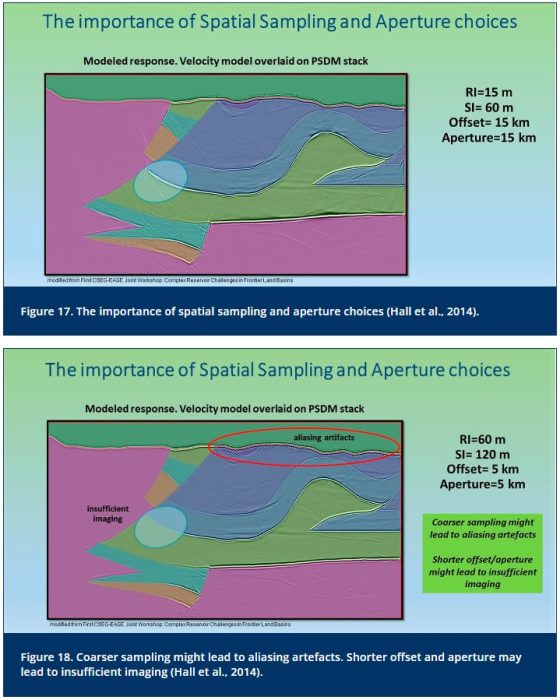In this month’s article, Svetlana Bidikhova and Mike Hall discuss depth imaging and convey some key information on the topic of Pre-Stack Depth Migration volumes. Understanding the complexities of this subterranean realm has been a persistent challenge for geoscientists, especially in the quest for valuable resources like oil and natural gas. In the realm of seismic exploration, one part of unveiling the secrets of the subsurface is depth imaging.
Depth imaging is a transformative technique in the field of geophysics, seismic exploration, and geological mapping. It goes far beyond traditional seismic processing methods that primarily focus on reflecting seismic waves off subsurface interfaces. Instead, depth imaging delves deeper into the Earth, creating a three-dimensional representation of the subsurface.
At its core, depth imaging aims to provide an accurate depiction of the Earth’s interior structure. It accomplishes this by considering the complex path seismic waves take as they travel through geological layers, each with distinct velocity properties. These variations in velocity must be meticulously accounted for to produce a reliable subsurface image.
The significance of Depth Imaging
- Accuracy: Depth imaging offers a higher level of precision compared to time imaging methods. It takes into account the true subsurface geometry and provides a more faithful representation of geological features, including faults, folds, and stratigraphic traps.
- Structural Understanding: It allows geoscientists to unravel the intricate structural architecture of the Earth’s subsurface. This is critical for identifying potential hydrocarbon reservoirs, optimising drilling strategies, and mitigating exploration risks.
- Velocity Model Building: A core component of depth imaging involves constructing a detailed velocity model. This model is crucial for accurately positioning reflectors, enhancing image quality, and facilitating the identification of subsurface features.
- Reservoir Characterisation: Beyond structure, depth imaging aids in characterising reservoir properties such as porosity, permeability, and fluid content. This insight is invaluable for making informed decisions regarding production and reservoir management.
- Risk Reduction: By producing a more accurate representation of subsurface geology, depth imaging reduces exploration and drilling risks. It enhances the likelihood of successful discoveries while optimising resource allocation.
Complex algorithms and computational power
Depth imaging is not a simple process; it requires advanced algorithms and substantial computational power. These techniques are applied to vast datasets obtained from seismic surveys, often involving the use of advanced technologies such as 3D, 4D and even 5D seismic acquisition. In an era where the energy industry is increasingly turning its attention to challenging and deep-water environments, depth imaging is an important component of better understanding the subsurface.
However, as the article goes into detail to discuss, there are caveat’s with the process of completing a PSDM that are causes of uncertainty, which is where we deliver value in your Kingdom and Petrel workflows, in obtaining accuracy in depth with VelPAK/Velit’s Stochastic Depth Conversion technique.
We hope you enjoy reading about the comprehensive exploration of depth imaging as the article delves into its methodologies, challenges, and real-world applications. If you’re a seasoned geophysicist and you have time to write an article in the fields of depth conversion or seismic inversion to help the wider geoscience community, then please get in touch here.

